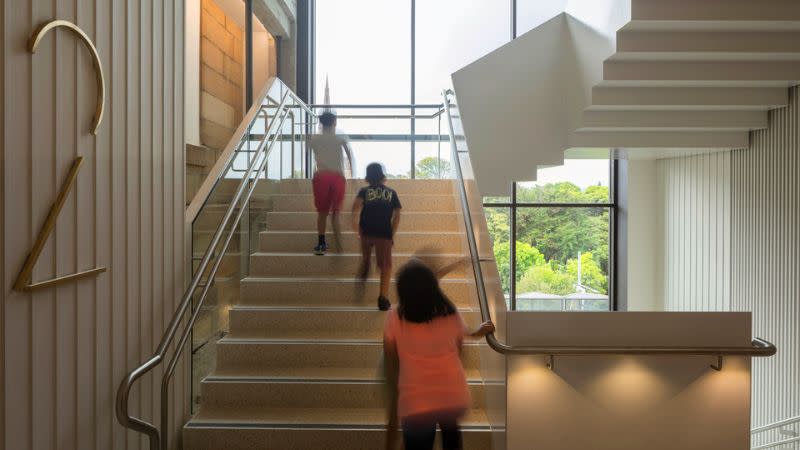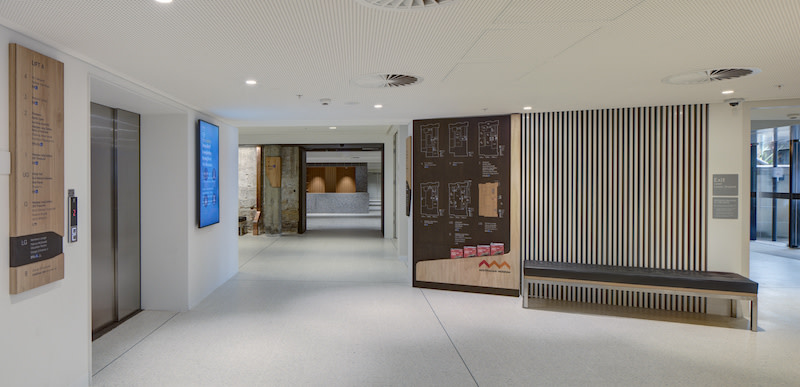Entro Leads with Intuitive Museum Wayfinding

Navigating a journey through the Australian Museum, which recently underwent a major transformation, is a seamless experience thanks to the wayfinding expertise of Entro.
Designed by COX Architecture and Neeson Murcutt + Neille, the transformation resulted in redeveloped exhibition areas and 3000sq m of new public space.
The museum in Sydney originally opened to the public in 1857 and has since enlightened visitors on topics ranging from climate change to First Nations knowledge to featured exhibits showcasing scientific research produced by the Australian Museum Research Institute.
Entro principal Jan Ashdown said visitors moved about differently at places such as museums and galleries than they did in environments with purposeful destinations such as hospitals or transit systems.
“In a museum space, visitors like to meander and to discover,” Ashdown said. “Therefore, our wayfinding design is intuitive—encouraging people to enter and exit various gallery spaces at their own pace.
“Our intention is not to rush people from point A to point B,” Ashdown said. “Instead, we gently nudge and lead them through, allowing patrons to choose their own path and shape their own journey through the space.”

The details are in the design
In addition to the wayfinding strategy, signage design plays a significant role in the visitor experience.
Aesthetically, the program needed to bridge the museum’s heritage architecture with its contemporary addition through the use of natural materials.
Moreover, it was crucial to the museum that the new wayfinding prioritise accessibility and acknowledge First Nations peoples.
Like many of the building’s interior features, with natural materials used throughout, the signs are made from plantation grown Blackbutt hardwood, which is endemic to eastern Australia.
Entro collaborated with the museum’s First Nations team to create an aesthetic that reflected the land and waterways on which the museum stands, and drew inspiration from natural landscapes such as mountains, trees, and rivers.
Scarred trees in particular were an influence as they have played a part in sharing knowledge and living in balance for millennia on the lands now known as Australia.

“Following global best practices in accessible wayfinding, many signs are tactile, include braille and were evaluated by the project’s accessibility consultant to ensure the design met Australia’s rigorous accessibility standards,” Ashdown said.
Customisation and attention to detail were central to the realisation of the program: All signs are bespoke to accommodate their individual locations, with precision-crafted joinery and cut forms, all contributing to a cherished and living sense of place.
Australian Museum director and chief executive Kim McKay said Entro had made a lasting contribution to the museum.
“The Australian Museum’s elegant new wayfinding not only helps visitors navigate the museum’s old and new spaces but it also incorporates native Australian materials that complement the museum’s heritage architectural features.
“Aside from seeing the gorgeous end result, my favorite part of working with Entro was mapping out the visitor journey and determining the best signage program to create a seamless experience for all visitors when enjoying the transformed Australian Museum.”
The Urban Developer is proud to partner with Entro to deliver this article to you. In doing so, we can continue to publish our daily news, information, insights and opinion to you, our valued readers.















